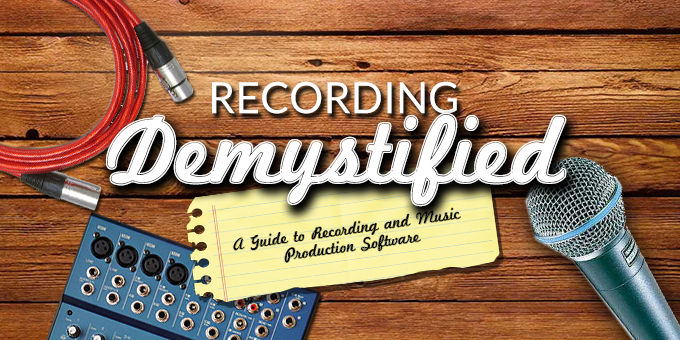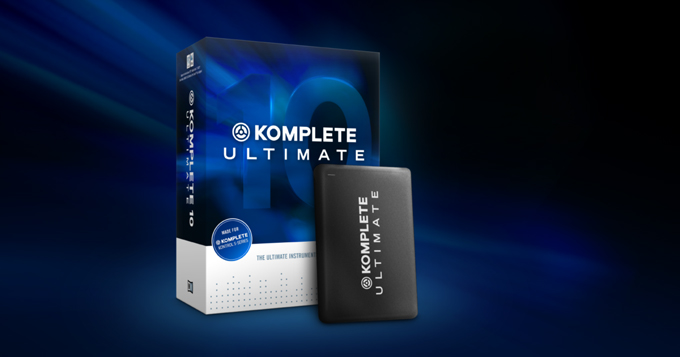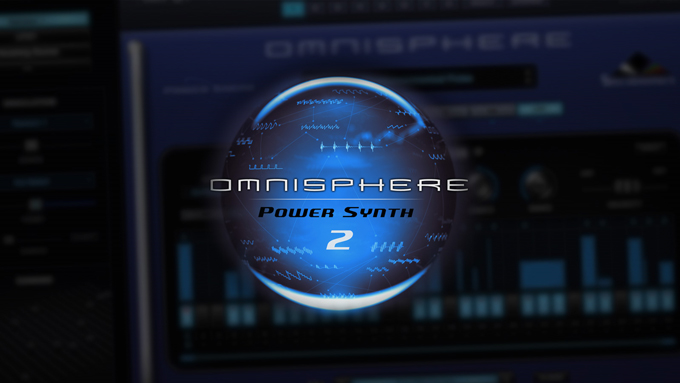A Guide to Recording and Music Production Software
Posted on Thu 17 September 2015 in entries
The use of software to record audio and create music has evolved over the last few decades to a point where the majority of studio work is now done with the aid of a computer. There are still a few people out there using “stand alone” multitrack recorders like the Tascam DP-series, and even a few are still recording to multi-track analogue tape, but the use of a computer has become the primary way of capturing and creating music.
If you are new to the world of recording, then you may need some pointers as to which way to go, so we have put together this article to help you understand what your options are, and what software you may need to get you started.
DAW – Digital Audio Workstation
The term “DAW” has been used for a long time now as the generic term for a piece of software that is capable of recording, manipulating and playing back digitally recorded audio.
Every computer music system needs a DAW at its core, as it is this software that combines some or all of the following functions: audio recording, effects processing, mixing, MIDI sequencing, MIDI editing, audio clip triggering, virtual instrument hosting, and notation/scoring.
Not every DAW has all of those capabilities, and some are better than others at certain aspects, so knowing how you want to work will help when trying to decide which DAW to use.
Below is a list of currently available DAWs, and briefly what they are known to be good for…
Avid Pro Tools - Very good audio editing and recording tools, often used for professional multitrack recording sessions and mixing, has MIDI sequencing but is not renowned for that aspect.
Steinberg Cubase – A good DAW that excels at MIDI sequencing and editing, and also has very good audio tools and recording functionality.
Ableton Live – A DAW that is capable of audio and MIDI recording, but aims more towards clip-triggering music production techniques – where short loops of music are triggered with a hardware controller, which is great for building tracks up “on the fly” out of pre-recorded musical sections.
Bitwig – very much like Ableton in functionality. In fact, the company was started up by some ex-Ableton employees.
Apple Logic – used to be owned by a company called Emagic, is OK at both audio and MIDI recording, but lacks some of the more advanced features of other current DAWs.
Presonus Studio One – a well-designed audio and MIDI DAW with support for VST and AU plug-ins, featuring a slick drag-and-drop interface.
Cakewalk Sonar – audio and MIDI DAW with a unique audio time-stretching and pitching option.
Propellerheads Reason – a good set of included virtual instruments, and a reasonably easy to use MIDI sequencer and audio recorder, can be used alongside other DAWs using “Re-Wire” technology.
Avid Sibelius – professional notation software that has very good MIDI editing and scoring facilities, can also host virtual instruments.
Most DAWs will also have a number of “versions” to choose from. This allows “power users” to get all of the features available, while the cut-down versions are cheaper to buy and have less features, many of which would be lost on a large proportion of users anyway.
The ways in which the top-tier versions may differ include the following:
- Advanced audio and MIDI editing features
- More audio & instrument tracks available
- More effects plug-ins
- More built-in virtual instruments
- Support for surround sound
- Support for video synchronisation
- More additional content – eg. more samples or instrument patches
If you really want to get into the details, then comparison charts are usually available on manufacturer’s websites for each DAW, showing exactly what you do and don’t get in each version.
Virtual Instruments
Virtual instruments (or VIs) are software instruments that are played via MIDI and are usually either hosted by your DAW, or can run standalone.
In days gone by, to get good quality sounds you would have needed to splash out on expensive keyboards or sound modules. Now, with all of the mature computer music products available, any sound, from guitars to pianos, drums and percussion, or orchestral instruments to synthesizers, can be emulated in software.
Many DAWs (especially the higher-tier versions) already come with a good selection of virtual instruments, but the really good sounds tend to come from third-party manufacturers, who specialise in creating instruments.
To use these plug-ins inside a DAW, they need to be in the right plug-in format. There have been various formats over the years, but the main current ones are as follows:
VST “Virtual Studio Technology” - The original plug-in format designed by Steinberg for both Mac and PC.
AU – Audio Units – the native plug-in format for the Apple operating system
AAX – Avid’s plug-in format for Pro Tools
For a plug-in to work on your system, it needs to be compatible with your host software (unless you are just running the plug-in stand-alone). So it is important to bear in mind this fact when buying both your DAW and any Vis, and check that the plug-ins you want to use are compatible.
Many virtual instruments come as “collections” or bundles, and this is often a great way to get thousands of sounds for a bargain price. Notable collections are:
Native Instruments Komplete – a vast collection of sample-based instruments, synthesizers and effects. The Ultimate version contains all of the current plug-ins in the Komplete range.
Arturia V-Collection – a collection of virtual synths, both new instruments and faithful emulations of many classic synthesizers.
Rob Papen eXplorer – All of Rob Papen’s plug-ins as a bundle, ranging from electronic drums to ground-breaking synthesizers.
Focusrite Novation Software Collection – a very good value little suite of synth and effects plug-ins. If you like synths and you are on a budget, this is a great place to start.
There are also loads of great VIs available as separate instruments too, these include:
Spectrasonics Omnisphere – a must-have if you are creating cinematic-type music and sound effects, thousands of sample-based sounds that can be easily manipulated.
Spectrasonics Stylus RMX – drum loops with attitude, thousands of loops, part-loops and single hits that have a “production-ready” sound.
Spectrasonics Trilian – a plug-in dedicated to bass sounds – acoustic, electric and electronic.
Toontrack EZ Drummer – great sounding drum plug-in with built-in grooves, EZX expansion pack add-ons available.
Toontrack Superior Drummer – a world-class drum plug-in with advanced features, add-on SDX expansion packs available, can also use EZX expansions.
Garritan Abbey Road Studios CFX Concert Grand – a great acoustic piano plug-in, sounds very authentic and expressive.
Synthogy Ivory – a family of piano plug-ins, each one having meticulously sampled the finest pianos in the world.
Effects and processing plug-ins
Traditionally, for each instrument track that needed some kind of audio processing, a piece of hardware was required – EQ, compression, reverbs, delays and any other effect would have had to been part of the signal chain, and many were only available to be used once, hence you would need a large mixer and lots of outboard effects processing modules to mix a track.
These days, plug-ins are used instead of hardware, which not only means it’s much more affordable to achieve a particular effect, but any one plug-in can be put over any number of tracks - only limited by available computer processing power. Now that’s progress!
All DAWs will come with some effects plug-ins that can be used to mold, shape and liven up each instrument. As mentioned above, the higher-tier versions of a DAW will usually include more, and better quality, plug-ins.
Third part effects plug-ins are available, and many of these emulate specific pieces of hardware, while others do not have their roots in older hardware and use the power of digital processing to give you some amazing new audio tools. Below is a selection of some of the best-selling audio plug-ins currently available.
Waves – World-renowned audio processing - lots of individual plug-ins, and some great value plug-in bundles
Universal Audio UAD – studio-grade hardware-powered plug-ins that use extra DSP to run the processing, freeing up your CPU for other tasks.
iZotope Ozone – mixing and mastering software at its best – a suite of modules to make your final mix sound like the real deal.
iZotope RX – restoration software for cleaning up problems in recordings, including de-noising and de-popping.
Toontrack EZ Mix – an easy-to-use mix management tool, with lots of presets to help you get the perfect sound quickly.
Conclusions:
There are hundreds of options when it comes to music production and recording software. Depending on your requirements and experience, you may find yourself needing lots of third party software for sounds and processing. On the other hand, if you just want to get some song ideas down, then all you need is a basic DAW.
You may even find that the “free” DAW software that comes with certain audio interfaces is enough to get you started (for more information about audio interfaces read this article), and there are usually upgrade paths from these that mean you can get a higher-tier version of the software at a discounted price.
Virtual instruments are great if you are composing any kind of music, so it may be that you should spend less on your DAW, and budget for some really good sounds from 3^rd^ party VIs. For example, if you are a guitarist but you need good drum sounds, then a drum plug-in will help to make your recordings sound like a real band.
Effects and processing plug-ins are a must if you are looking to get a professional sound, but if you are just starting out, then I would suggest playing with the plug-ins in your DAW first, and when you can see their limitations then look at additional software.
Happy recording!



